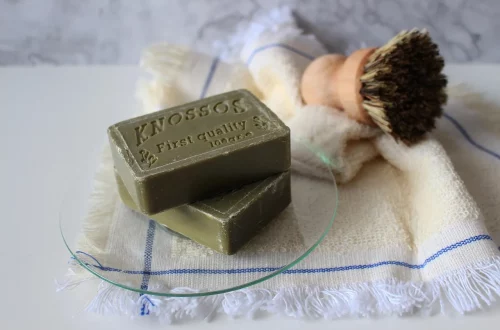
Understanding Dark Spots on the Bottom of Your Feet: Causes and Solutions
Understanding dark spots on the bottom of your feet can be a perplexing experience for many individuals. These seemingly innocuous markings can evoke a variety of feelings, from concern to confusion. Often overlooked, the skin on the soles of our feet undergoes a unique set of stressors, including constant pressure, friction from footwear, and exposure to various environmental elements. As such, it is not surprising that changes in pigmentation can occur over time.
Dark spots might appear due to a range of factors, from benign conditions to more serious underlying issues. Some individuals may associate them with aging or sun exposure, while others might be puzzled by their sudden appearance. Understanding the nature of these spots is essential in determining their origin and potential implications for overall health. Moreover, recognizing the appropriate steps to address and treat these blemishes can empower individuals to take charge of their foot health.
In this exploration, we will delve into the causes and possible solutions for dark spots on the soles of your feet, providing insights that can lead to better awareness and proactive care.
Common Causes of Dark Spots on Feet
Dark spots on the soles of your feet can arise due to a variety of factors, each with its unique characteristics and implications. One of the most common causes is hyperpigmentation, which occurs when certain areas of the skin produce more melanin than others. This condition can be triggered by several factors, including sun exposure, hormonal changes, and certain medications.
Another frequently encountered cause is friction. The soles of our feet are subject to constant wear and tear, especially in individuals who are active or spend long hours standing. This friction can lead to the thickening of the skin, known as calluses, which may take on a darker appearance over time. Additionally, the use of ill-fitting shoes can exacerbate this issue, creating localized areas of pressure that contribute to the formation of dark spots.
In some cases, dark spots may be indicative of underlying health conditions. For instance, conditions such as diabetes can lead to changes in skin pigmentation due to poor circulation or nerve damage. Similarly, certain skin disorders, like eczema or psoriasis, can also cause darkening of the skin in affected areas.
Lastly, skin injuries, such as bruises or cuts, can leave behind dark spots as they heal. This is a natural part of the healing process, but it is crucial to monitor these changes to ensure they do not signify a more serious problem.
Prevention Strategies for Dark Spots
While dark spots on the bottom of your feet can be concerning, there are several strategies you can implement to prevent their occurrence. One of the most effective methods is to protect your feet from excessive sun exposure. Although it may seem trivial, applying sunscreen on the tops and sides of your feet, especially during summer months, can help reduce the risk of sun-induced pigmentation changes.
Additionally, choosing the right footwear is essential for preventing friction and pressure on the soles. Opt for shoes that provide adequate cushioning and support, and avoid those that are too tight or poorly fitted. This will not only help in reducing the likelihood of developing dark spots but also contribute to overall foot health.
Regular foot care is another critical aspect of prevention. Keeping your feet clean, moisturized, and well-groomed can help maintain healthy skin. Regular exfoliation can also play a role in preventing the buildup of dead skin cells, which can contribute to the appearance of dark spots. Incorporating foot soaks and scrubs into your routine can promote circulation and skin turnover, further reducing the risk of pigmentation changes.
Finally, maintaining a healthy lifestyle can have a positive impact on your skin. Eating a balanced diet rich in antioxidants, staying hydrated, and managing stress can all contribute to healthier skin. By taking these proactive steps, you can significantly reduce the likelihood of developing dark spots on the soles of your feet.
Treatment Options for Dark Spots
If you already have dark spots on the bottom of your feet, several treatment options can help diminish their appearance. It is essential to start by consulting a healthcare professional, particularly if the spots change in appearance or if you have concerns about their origins. A dermatologist can provide a proper diagnosis and recommend appropriate treatments tailored to your specific situation.
One common treatment method is the use of topical creams containing ingredients such as hydroquinone, kojic acid, or retinoids. These compounds work by inhibiting melanin production and promoting skin cell turnover, leading to a gradual lightening of dark spots. However, it is vital to use these products as directed, as improper use can lead to skin irritation or other adverse effects.
Another effective approach is professional treatments, such as chemical peels or laser therapy. Chemical peels involve the application of a solution that exfoliates the top layers of skin, revealing fresher, more evenly pigmented skin underneath. Laser therapy, on the other hand, uses concentrated light beams to target pigmented areas, effectively breaking down excess melanin.
For individuals who prefer natural remedies, several options may help lighten dark spots. Ingredients like lemon juice, aloe vera, and apple cider vinegar are known for their skin-brightening properties. However, caution should be exercised, as these remedies can cause irritation for some individuals, especially on sensitive skin.
In conclusion, while dark spots on the soles of your feet can be a cause for concern, understanding their origins and exploring treatment options can help you manage them effectively.
**Disclaimer:** This article is for informational purposes only and does not constitute medical advice. If you have health concerns or experience any changes in your skin, please consult a healthcare professional.




